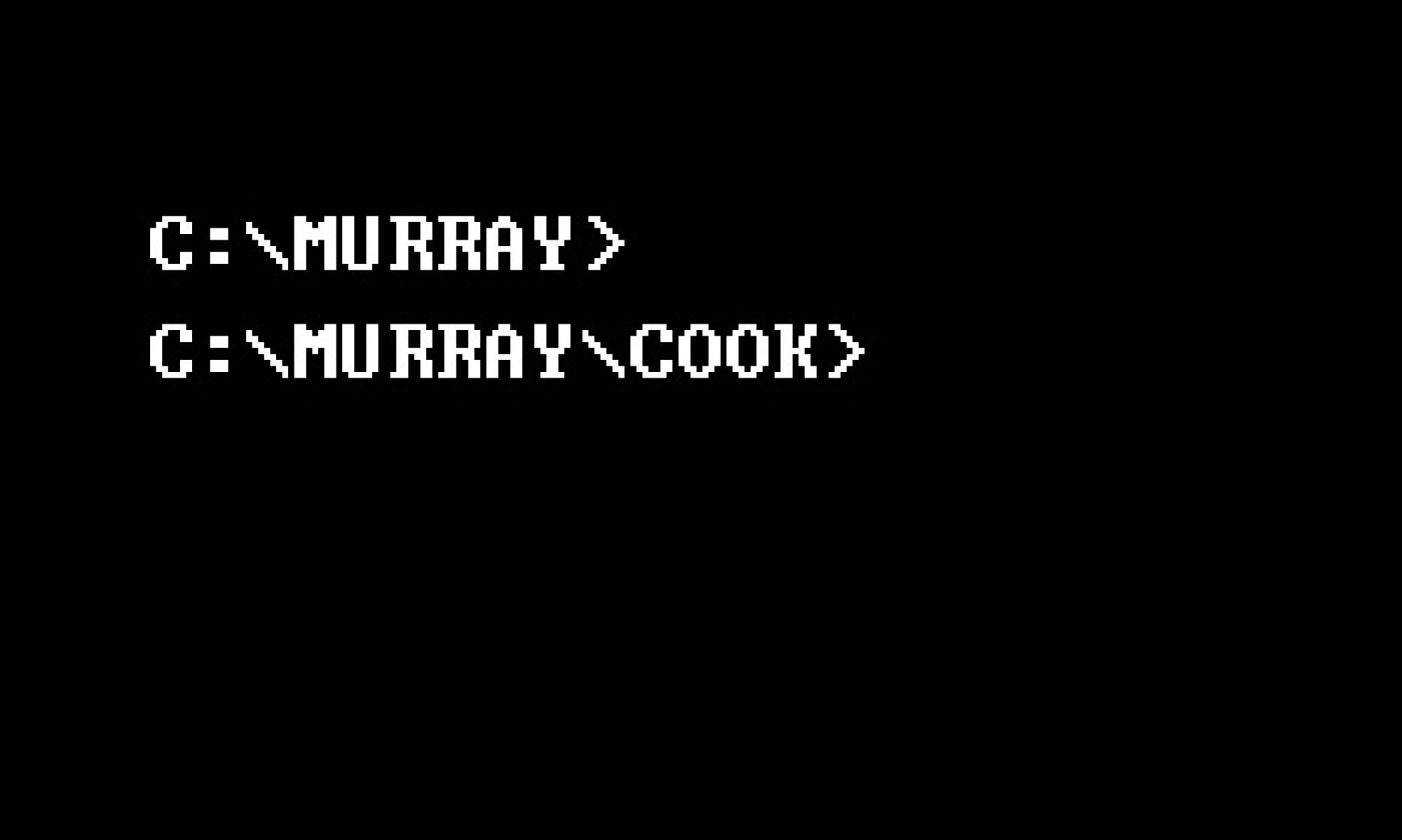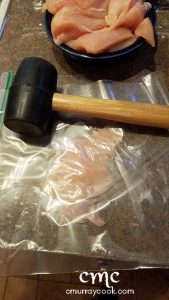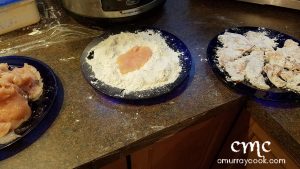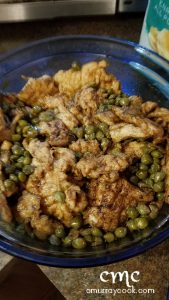CHICKEN PICKIN’
Piccata supposedly means “annoyed”, according to Wikipedia, but not trusting Wikipedia, I checked WordReference.com, which informs me that “piccare” (the verb of which ‘piccata’ is the past participle) means “to pretend to be good at something”. I don’t know what this chicken is annoyed at or pretending to be, but it is definitely delicious.
I’m not sure where I discovered this recipe. It’s not one of my family’s recipes, from either side, at least that I remember. It’s similar to francese, except that dish doesn’t have capers and may dip the chicken in an egg wash. Since capers are awesome, I’ll stick with piccata.
This is a dish for the sour lovers. Capers are the pickled buds of a wild bush, and they have a salty, sour flavor. The sauce is made from the leftover oil in the pan, mixed with wine and lemon juice. So let’s get sour!
Although the dish may be traditionally made with veal (its origins are murky, to say the least), it’s usually made with chicken these days (see Notes), and that’s what I chose to use. You want to cut your chicken breast into slices, and then get out your pounder.
Place the chicken between two heavy food grade pieces of plastic (I split a gallon freezer bag down the sides) and pound it to about 1/4-1/8″ thick. There are specific tools for the job you can buy, but I find most meat hammers to be kind of tiny and useless, so I use a rubber mallet I picked up at the hardware store.
After pounding it flat, you’ll want to flour it. Season flour with salt and pepper, and place it on a dish, and get a third dish ready. (The pounded chicken is on the first dish.) Dredge the chicken in the flour, coating both sides, and then transfer to the third dish. If you are smart, you would have prepared sheets of parchment paper to keep the chicken layers apart. I am not that smart.
Heat a mixture of butter and olive oil in a pan on medium-high heat. Fry the chicken in batches — don’t crowd the pan, just do three or four pieces at a time. The thin meat will cook fairly quickly, less than a minute per side. Browning is nice but not completely necessary, since you’re really only browning the flour.
After the chicken has all been fried (you may have to refresh the butter/oil mixture once or twice), put the meat in a large heatproof bowl and prepare the sauce. Without taking the pan off the heat, add the lemon juice, wine, and capers. I added a little salt and pepper too. Stir to deglaze the pan, scraping the brown bits off the bottom, and let it cook for about five minutes. Pour the sauce over the bowl of chicken and go do something else for a few minutes.
Serve with rice or some other kind of starch (risotto is good; pasta is unusual; I kind of like toast, honestly) and make sure each serving has a decent amount of sauce and capers on it. The capers will pop in your mouth and add a nice little hit of acid and salt.
RECIPE
- 4 lbs chicken breast
- 2-3 c. all-purpose flour
- Juice of 6 lemons, about 3/4 cup
- 1 cup white wine (I used a blend from Rueda)
- 1 4.25 oz. jar capers
- 1 stick butter
- 1 cup olive oil
- Salt
- Black pepper
Slice the chicken and pound it flat with your favorite pounding device. Season the flour with salt and pepper and coat the chicken in it. Fry the chicken over medium-high heat in a mixture of butter and olive oil, a minute or less per side, and place in a heatproof bowl.
Keep the pan over medium-high heat and add the wine, lemon juice, and capers to the oil and flour that are still in the pan. Cook together for about 5 minutes, scraping the fond off the bottom, and add a little salt and pepper. Pour the sauce over the cooked chicken and let sit for a couple of minutes. Serve with a starch.
NOTES
Veal was probably used when the dish was made (probably the 1930s) because it was actually cheaper than chicken at the time. (If you’ve ever heard of “city chicken“, which is actually veal or pork, that dish got its name because chicken was expensive (especially in the cities) and people were trying to make do with substitutes.)
Capers come in several sizes. I use capotes, because they are fairly easy to find. Nonpareils are too small and fiddly.
Meat tenderizers are kind of useless, in my opinion. They weigh next to nothing and will never get the job done. My mallet cost me $5 and has other uses around the house. I’ve also heard of people using a heavy skillet. You usually want to start in the middle and work your way outward.
The wine I used in this dish, Honoro Vera Rueda, I picked up on a whim because it was inexpensive and also because one of my flatmates in college was named Rueda, and that’s as good a reason as any to choose a wine, right?
I really love this dish and will pick at it constantly. I probably ate at least 1/2 pound before finally putting it away. I’m trying to stop myself from going to the fridge right now, in fact. Wait, the post is over. Be right back…




